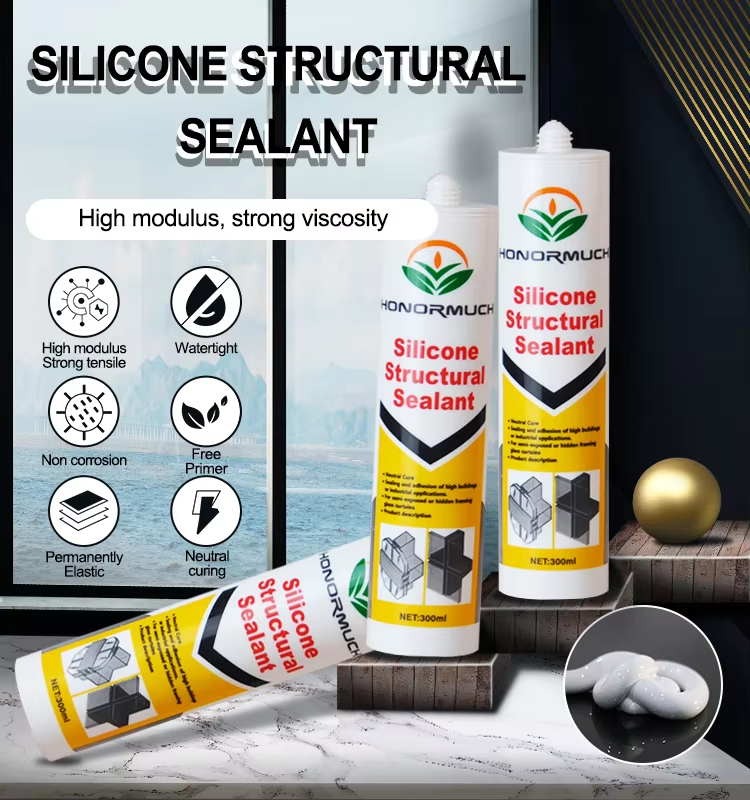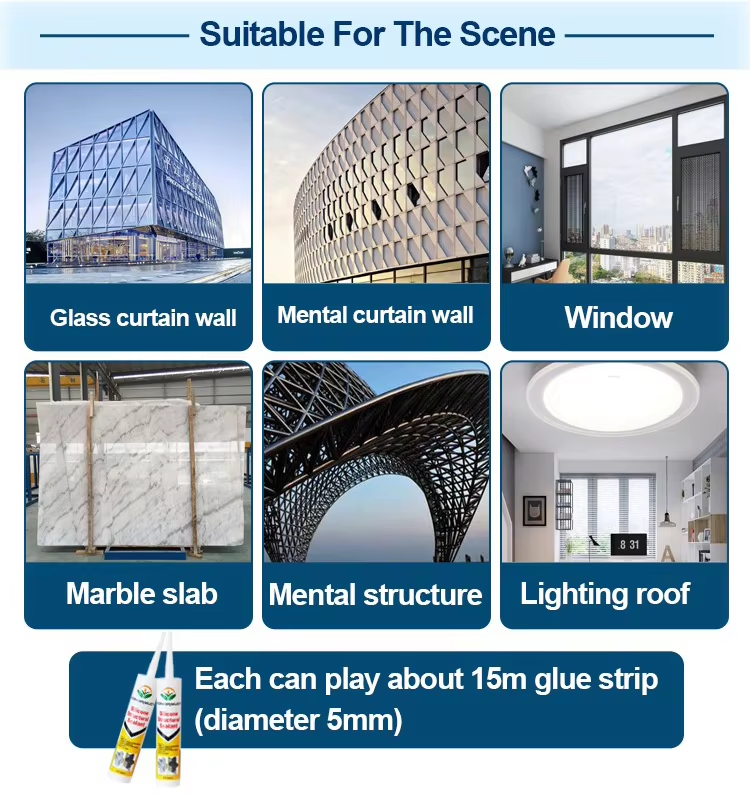Bonding principle of silicone sealant and construction precautions
Performance of silicone structural sealant
Silicone adhesive is stable to ultraviolet rays and ozone. For example, the solar panels on my country’s Dongfanghong satellite in 1970 were bonded by silicone structural adhesive. They have withstood the test of time in the extremely harsh space environment, which shows its excellent UV resistance, aging resistance, weather resistance and timeliness.
Principle of sealant seam bonding
Adhesion refers to the phenomenon that two surfaces are combined together by chemical force, mechanical interlocking force or both, and can resist separation. Adhesives can make the adherends combine together by adhesion. Structural adhesive refers to a bonding technology that can transmit large static and dynamic loads and work reliably for a long time in the use environment. It tightly combines the adherends through wetting, mechanical interlocking and primary bond action to form a stable and long-term hyperstatic structure.
Precautions
Before the structural adhesive is used in the construction and installation of the glass curtain wall, the factory date must be checked. Structural adhesives that have exceeded the use date are strictly prohibited from being used in curtain wall projects. In addition, the adhesion and compatibility tests of the substrate to be constructed should also be carried out.
The processing of hidden frame curtain wall must be carried out in a workshop with enclosures, and fire prevention, explosion prevention and dust prevention measures must be taken. The uniformity, setting time and curing degree of silicone structural adhesive must be tested daily in accordance with relevant specifications. The construction environment should be maintained at 10-40 degrees Celsius and clean conditions with a relative humidity of 40%-80%. Construction personnel must be familiar with the construction process of structural adhesives and understand the bonding and sealing parts and supporting materials specified in the engineering drawings. Using special tools, single-component structural adhesives can be extruded by manual or pneumatic glue guns. Two-component structural adhesives require special glue injection and mixing equipment for injection.
Construction operation
1. Before using two-component silicone structural adhesives, they must be fully mixed in the specified proportion, and the butterfly test method must be used to test the mixing uniformity before each pump injection. During use, a pull-off time test must be performed once a day and the results must be recorded.
2. When injecting glue, the nozzle should be kept moving evenly, continuously and moderately to ensure that the interface is filled with structural glue, and avoid moving too fast or reciprocating to produce bubbles or cavities.
3. After the injection is completed, the excess structural glue outside the interface should be compacted inward with a scraper in time to make it fully contact with the side of the interface to reduce internal bubbles and cavities and ensure full contact with the bonded surface. Finally, the interface surface needs to be scraped flat in the same direction.
4. After the component is injected with glue, it should be moved horizontally to the curing storage area for maintenance. During the process of moving and placing, it is strictly forbidden to cause any displacement of the aluminum frame glass.
Construction quality control
1. Before installing the components, the appearance of the manufactured structural units must be checked one by one to ensure that the structural glue fully fills the cured part without bubbles or cavities. If bubbles or cavities are found, they should be cut immediately and refilled with structural glue in time.
2. During the production of curtain wall units, batch peeling adhesion tests must be carried out. If the bonding damage area exceeds 5%, the production of new units should be stopped immediately and rectification should be carried out in time. At the same time, the unit components of this batch shall be subject to a key glue cutting and peeling adhesion test. If unqualified, they shall be reworked and remade.
3. The curtain wall units produced shall be delivered and inspected batch by batch, and the operation and test conditions shall be fully recorded. After passing the inspection, fill in the quality inspection report.



